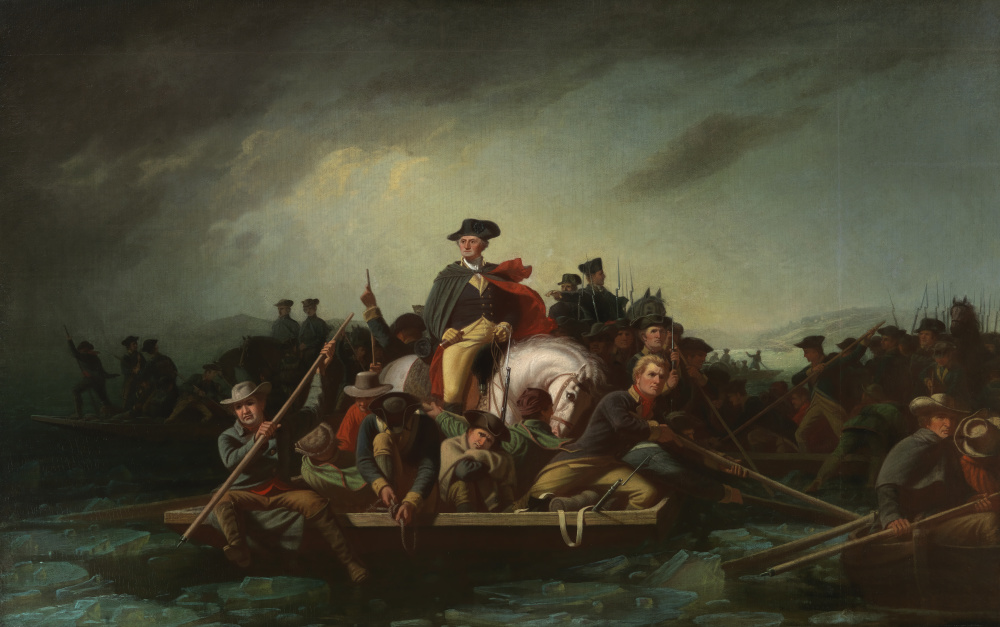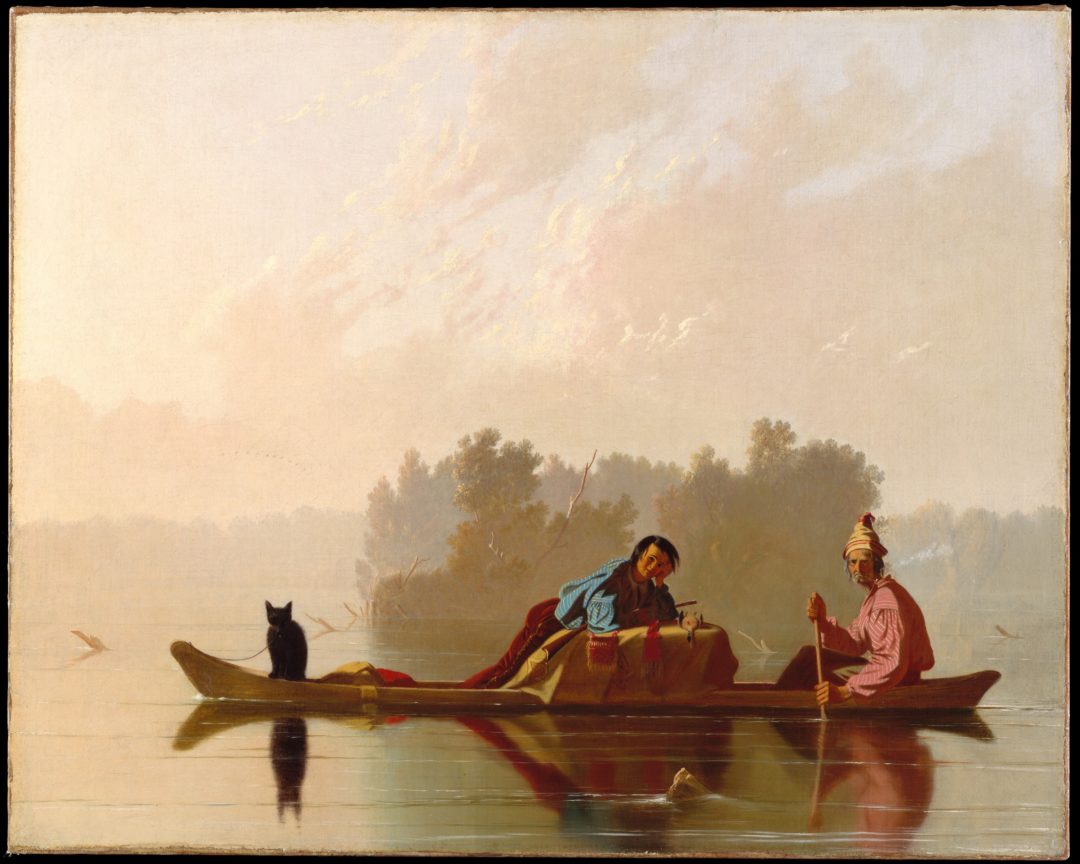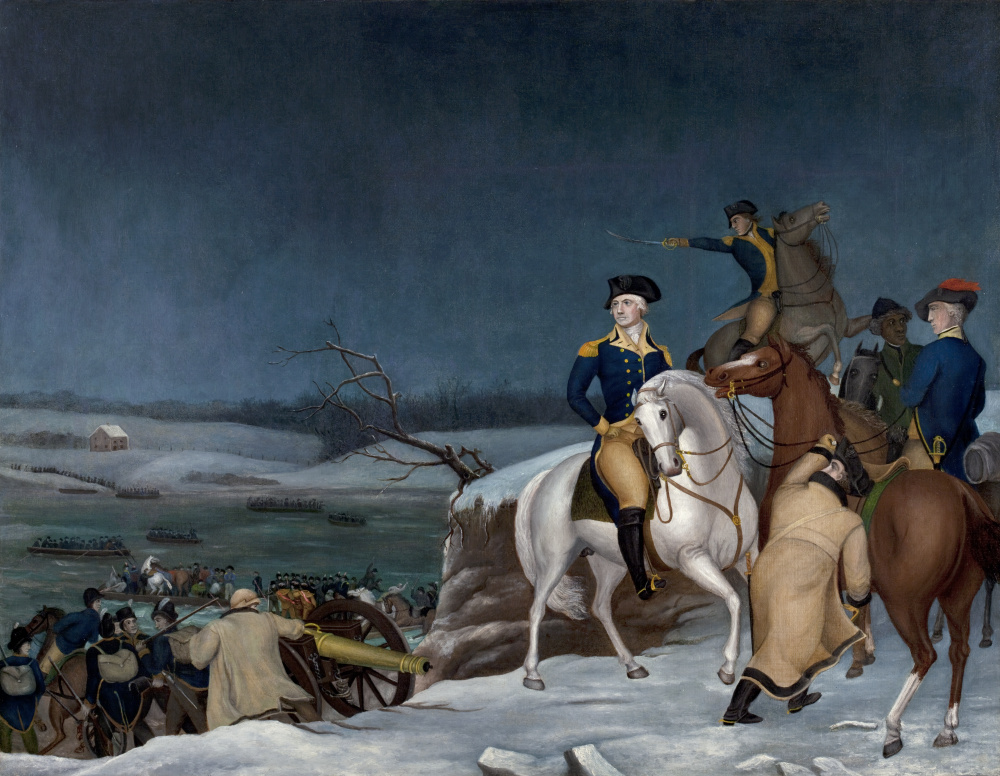- Open today, 10 am to 5 pm.
- Parking & Directions
- Free Admission
An Anniversary Gift from Walter P. Chrysler, Jr.
– Corey Piper, PhD, Brock Curator of American Art

George Caleb Bingham (American, 1811–1879), Washington Crossing the Delaware, 1856-71, Oil on canvas, Gift of Walter P. Chrysler, Jr., in honor of Walter P. Chrysler, Sr., 83.589
In 1983, the Chrysler Museum of Art was celebrating another 50th anniversary—the 1933 opening of the Norfolk Museum of Arts and Sciences. In honor of the celebration, Walter P. Chrysler, Jr. donated a group of ten European and American paintings to the Museum. The works from his collection included George Caleb Bingham’s Washington Crossing the Delaware. The gift was a fitting tribute to the Museum that Chrysler had transformed in 1971 with the gift of his extensive collection numbering over 7,000 objects. The painting by Bingham had been on deposit at the Museum since 1976 (another anniversary year) when Chrysler acquired it from the dealer Knoedler & Company in New York. The gift of Bingham’s canvas added an important, if somewhat quirky, example of the work of one of the mid-nineteenth century’s greatest painters of western themes and genre scenes.
Born in Virginia in 1811, Bingham moved with his family as a young child to Missouri, where his relatives became prominent business and civic leaders of their adopted home. Admitted to the Union as a slave state as part of the Missouri Compromise of 1821, Missouri functioned as a geographic, economic, and political gateway to the United States’ western frontier. The state and its largest city, St. Louis, grew into a commercial and military hub from which settlers and prospectors embarked upon and returned from journeys westward. Largely self-taught, Bingham pursued a career as a portrait painter, traveling around Missouri and supplementing his training with stints back east in Philadelphia at the Pennsylvania Academy of the Fine Arts.

George Caleb Bingham, Fur Traders Descending the Missouri, 1845, Oil on canvas, Morris K. Jesup Fund, 1933, Metropolitan Museum of Art, 33.61
Bingham soon developed an artistic niche, painting scenes of life along the Missouri River. He knew the subjects well from his upbringing and travels around the state. Paintings like Fur Traders Descending the Missouri offered a ruddy but tranquil version of life on the frontier that appealed immensely to audiences in eastern cities who had endless fascination but little firsthand experience of life in the nation’s western reaches. Before long, Bingham became one of the United States’ most popular painters of genre scenes, celebrated for his pictures of life in the West. Paintings like The Jolly Flatboatmen were well received at important artistic venues like the American Art Union in New York City and regularly turned into high-quality prints that were widely distributed. Bingham’s vision of life along the Missouri, full of rustic charm and largely devoid of Indigenous people, enslaved laborers, and colonial violence, would prove highly influential in shaping public perceptions and mythology of the West.
Despite his popular reputation as a painter of scenes of life in the West, Bingham also aspired to achieve recognition as a painter of historical subjects. Washington Crossing the Delaware is his most ambitious undertaking in that arena. The Revolutionary War subject, which depicts the General’s surprise attack on Christmas Day in 1776, was already well-trod territory in American art. Thomas Sully’s The Passage of the Delaware was well-known through engravings and inspired many copies like Edward Hicks’s charming rendition of the same subject in the Chrysler’s collection. The more immediate inspiration for Bingham’s canvas, however, would have been Emmanuel Leutze’s monumental Washington Crossing the Delaware, which Bingham would have likely seen exhibited in New York in 1851.

Edward Hicks (American, 1780–1849), Washington at the Delaware, ca. 1849, Oil on canvas, Gift of Edgar William and Bernice Chrysler Garbisch, 77.1271
Bingham began his own Washington Crossing the Delaware around 1856 while working in Columbia, Missouri, writing to a friend that he hoped to create a painting that would rival Leutze’s in grandeur and fame. He invested other grand plans in his venture to attract a commission from the Missouri state legislature for more historical paintings. When these opportunities did not materialize, Bingham slowed work on the canvas, turning to other pursuits, including a European journey and his own political career. The painting remained unfinished in the interim until around 1871, when Bingham was perhaps encouraged by the engraver John Sartain to finish the work in order to produce a print after the composition. It was likely at this time that Bingham enlarged the work, adding a 2 ½–3-inch strip of canvas to the top.
Ultimately, Bingham’s Washington did not achieve the type of success that might have transformed his career into that of a painter of historical subjects. The composition, full of jumbled figures huddled and shivering in flat-bottomed boats, shared much with the artist’s previous depictions of life along the Missouri. Despite the powerful, pyramidal organization, with Washington at the apex, the canvas lacks the forcefulness and vigor of either Sully or Leutze’s versions in which the general is propelled dynamically across the surface of the picture. While Bingham’s tattered and forlorn-looking soldiers might have aligned more closely with the historical reality of the wintertime crossing, legend often proved more important than fact in the judgment of history paintings in the nineteenth century.

